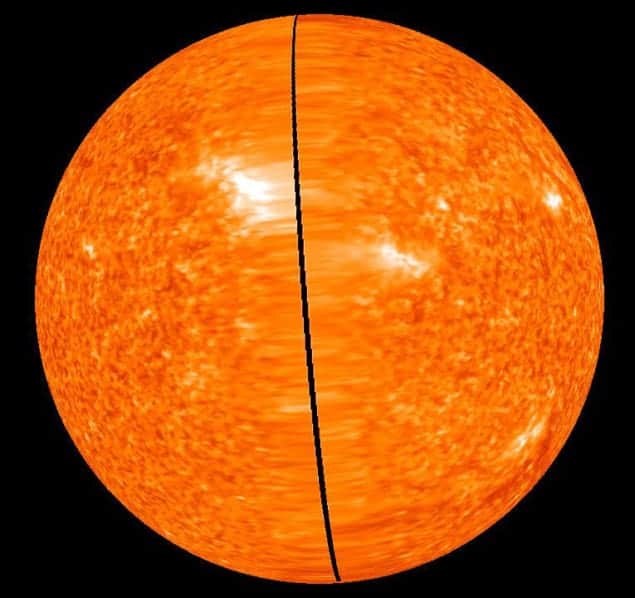
The first complete view of the Sun’s entire surface and its atmosphere was captured yesterday by NASA’s STEREO mission. Researchers are proclaiming the images a triumph for space science that will boost our understanding of solar dynamics and help to improve space weather forecasts.
Launched in 2006, the Solar Terrestrial Relations Observatory comprises two nearly identical spacecraft: one lying ahead of Earth in its orbit, the other trailing behind. In this way STEREO is able to construct 3D images of the Sun in the same way that our eyes can perceive depth.
On Sunday the satellites arrived at the positions where the Sun lay directly inbetween them, and each probe began photographing half of the star and beaming the images back to Earth. Each STEREO satellite is fitted with telescopes tuned to capture four wavelengths of extreme UV radiation associated with activity on the solar surface.
I am very impressed by the new images – it’s a real landmark for space science Jonathan Eastwood
“For the first time ever, we can watch solar activity in its full three-dimensional glory,” says Angelos Vourlidas, a member of the STEREO science team at the Naval Research Lab in Washington, DC.
Eric Priest, a solar physicist at the University of St Andrews in Scotland, believes that having this 360° view of the Sun will make life easier for astronomers to track features on the Sun’s surface. “Now we shall be able to follow their evolution continually, which will help to solve many of the major conundrums of solar physics – such as the origins of solar flares and coronal mass ejections,” he says.
This is because the Sun spins on its axis relatively rapidly, completing a full rotation once every 25 days, and so surface features often rotate out of view.
“I am very impressed by the new images – it’s a real landmark for space science,” says Jonathan Eastwood, a solar physicist at Imperial College, London who works on the STEREO radio science experiment, which traces the generation and evolution of travelling radio disturbances from the Sun to the orbit of Earth.
Eastwood believes that the STEREO images will help us better understand how the Sun’s atmosphere behaves. “This will have a practical impact, because it will help us understand how activity on the Sun leads to ‘space weather’ on Earth, which is due to peak in the next few years as the Sun reaches its maximum levels of activity.”
The 360° view of the Sun will begin to vanish as the two craft continue to move behind the Sun, relative to the view from Earth, eventually reaching each other in 2015.
But the lack of coverage on the Earth-side of the Sun will be filled by another NASA mission, the Solar Dynamics Observatory (SDO), launched in 2010. “[SDO] plugs the gap. So, we will have a full view of the Sun for some years,” says Richard Harrison of the UK’s Rutherford Appleton Laboratory, who worked on developing the imaging systems on both missions.
“We cannot image any other star in 3D and it is essential for understanding how the complex solar atmosphere works and how that drives the activity that can impact us,” Harrison adds.




